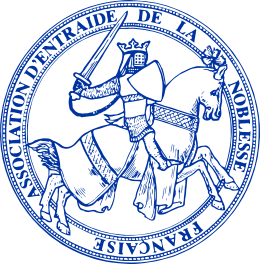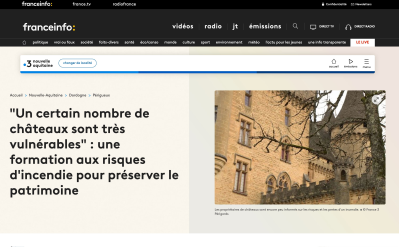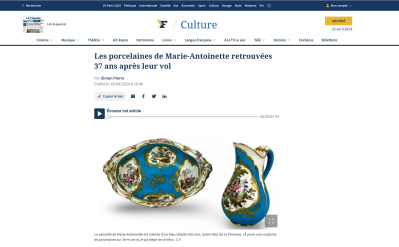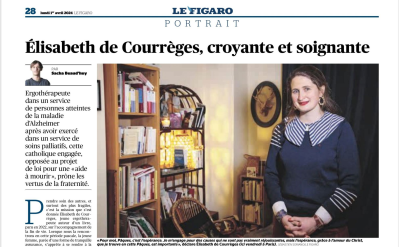News

Ouest France: "ENTRETIEN: " Les demeures historiques ouvertes au public contribuent à l'économie locale "" (in French)
Celebrating its 100th anniversary, the Demeure historique association brings together 3,000 private owners of historic monuments and gardens. Every year, this heritage welcomes over nine million visitors. Transmission, financing and sustainable development are three of the major challenges.

Olivier de Lorgeril is President of the Demeure historique association. He owns the Château de La Bourbansais in Pleugueneuc (Ille-et-Vilaine). | DAVID ADEMAS / OUEST-FRANCE
Since 2019, Olivier de Lorgeril has been President of the Demeure historique association, which is recognized as a non-profit organization. In this centenary year, the owner of Château de la Bourbansais reminds us that, by opening their doors to the public, privately-owned historic buildings contribute to the economic and cultural life of the region. This openness is also necessary to ensure their longevity, and to encourage people to pass on their heritage.
100 years. The association has an extraordinary longevity. How do you explain this?
It's the oldest recognized association of public utility that brings together and supports owner-managers of private historic monuments in France. We owe it to the visionary approach of Joachim Carvallo, owner of the Château de Villandry in Touraine. Thanks to the passion and innovation of its members, the association has become a lasting force.
3,000 members
Who are these members?
The 3,000 members are owners of a wide variety of properties. It could be a château, a manor house, an abbey or a priory, but it could also be a former industrial site or a garden. There isn't a canton in France that doesn't have its own historic or remarkable monument. They are the last line of defence against the lack of culture in the countryside, especially in rural areas.
You encourage members to open to the public.
Half of our members are open to the public. That represents over nine million visitors a year. There are openings all year round, during the summer season or on a more occasional basis. Opening to the public means putting our monuments back to use, giving them an economic reality. In fact, the lack of use explains why some of them are in such poor condition.
We have also created a group within the association: the Audacieux du patrimoine. This network brings together owners who are developing sustainable economic activities on a professional basis. The idea is to encourage the emergence and sharing of profitable business models, while at the same time revealing the socio-economic potential of our heritage.
Half opens to the public
How can we meet the challenge of passing on this heritage?
I don't know an owner who isn't concerned about the future. It's a challenge that's more topical than ever. You have almost 1,500 châteaux and monuments for sale right now. Twenty years ago, there were between 2 and 300. It's such a responsibility, such a financial burden. That's why we're fighting to put them back to use. If you reinvent a more balanced economy around it, it becomes a lot less anxiety-provoking for the younger generations to get started, to become entrepreneurs.
The search for funding is another challenge for the association.
Public resources are scarce, but maintaining a constant envelope of funding is essential. Injecting €1 of public money into the heritage sector means €21 of direct and indirect spin-offs for local communities. An open historic monument is good for the local economy. Local businesses and craftsmen are put to work, and tourism is generated. An economy that can't be relocated.
The French government, via the Drac, partly subsidizes maintenance work on listed or classified historic monuments. We also try to mobilize local authorities, to make them understand that they can benefit from the project. In Brittany, in addition to the Region, there is only one Department - Morbihan - which has retained support. Stéphane Bern used to say that heritage is everyone's business.
Patronage is also an essential source of additional funding. The Fondation Mérimée, set up by the association, has raised almost five million euros, and as much work has been carried out with the help of the public authorities.
Historic buildings and sustainable development" observatory
How can we meet the challenges of energy transition and sustainable development?
In September, we'll be launching the Historic Monuments and Sustainable Development Observatory, under the aegis of Grégory Quenet, professor of environmental history. The potential contribution of inhabited historic monuments is greatly underestimated. Monuments, particularly in rural areas, need to be considered as a whole. There's the building and its surroundings, the parks and gardens, the biodiversity niches. Building materials often have a local origin that deserves to be mapped. There's a long tradition of self-sufficiency in food and energy that needs to be revived. Sustainability is also about the social ties forged around these homes. The aim of this observatory is to develop new indicators and tools for assessing the sustainability of inhabited monuments. Historic monuments are key players in sustainable development.
Read the article on www.ouest-france.fr
By Pierre Momboisse
Published on Monday, April 1, 2024








